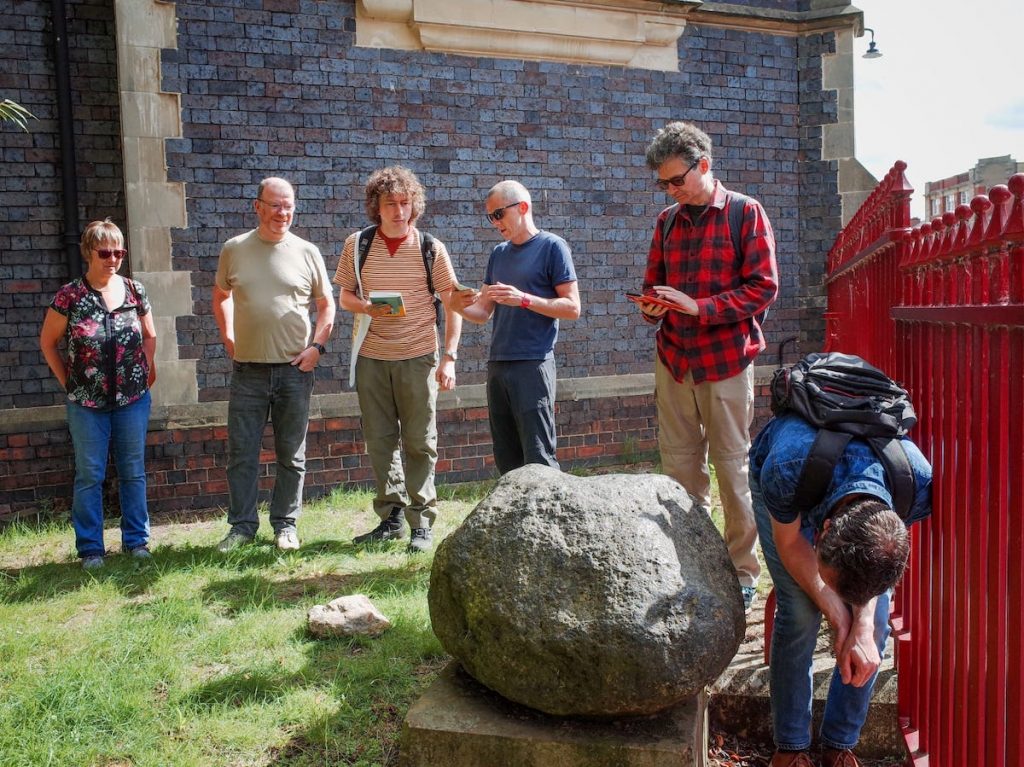
Photo Credit: Jay Mason-Burns
As part of the run up to the hardcover release of my book, Walking as Artistic Practice (softcover comes out in April!), I’m going to be publishing some brief interviews with the various artists, authors, researchers, creatives, collectives, and platforms whose art practice, written material, or other works I cite and mention.
My sixth interview in this series is with Andy Howlett of “Walkspace.” Andy Howlett is a Birmingham-based artist and filmmaker. He’s a founding member of Walkspace and his interests include collective walking, urban exploration, guerrilla heritage and The Right to the City. Walkspace is a collective of artists and wanderers in the West Midlands who are intrigued by walking in all its forms. From gentle strolls to hardcore psychogeography, group walks to solo explorations, Walkspace covers the interesting, weird edges of the humble perambulation.
EM: First, thank you for chatting with me about your collective, Walkspace, and your international collaborative project zine, Parallel Walking: Between Here and There, Between Seen and Unseen (2022) with female-led Jalan Gembira walking group in Yogyakarta, Indonesia. I cite this work in chapter two (Analyzing Walking Works) in the subsection on “Written Texts.” How would you describe this project for people who might not be familiar with it?
AH: Parallel Walking was an international walk-based cultural exchange exploring pedestrianism in two motor cities – Birmingham, UK, and Yogyakarta, Indonesia – resulting in a digital zine of works including walk-based songs, essays, photos and shared walk experiences. Three walking artists from Walkspace in the UK and three artists invited by Indonesian walking collective, Jalan Gembira, walked in virtual parallel to explore their respective cities, individually and communally, on and off-road. Results were shared in online discussions, a parallel exhibition and in a digital zine. Common themes arose around pedestrian safety, public-private space, urban planning, lack of pedestrian infrastructure, patriarchal spaces, tourism and gentrification, economic disparity, and the different emotional experiences of walking in the city. Both explored walking as a radical act in cities that prioritise cars and motorbikes over pedestrians. Through the work, a connection was made between walking collectives in cities 10,000 miles apart, giving insight into each other’s artistic, cultural and collective processes.
EM: What are your thoughts on walking as artistic practice?
AH: I think going for a walk is an inherently creative act because you’re curating an experience in real time: responding to stimuli, improvising a route, making associations and connections. Walking as art therefore makes a lot of sense but it’s still not a very well known or understood discipline. I remember the excitement when I first started discovering the possibilities of walking as a creative practice: the realisation that I had all the subject matter I could desire right on my doorstep. My city was my playground and all I had to do was walk to unlock its secrets and magic. I’m now particularly interested in exploring the power of collective walking and considering walking as a form of spell-craft or ritual.
EM: Can you tell us about any recent or upcoming projects Walkspace is excited about?
AH: Our most recent public walk was the second in our Wandering Rocks series responding to the erratic boulders which travelled to Birmingham from Wales on a glacier. You can read about it here: http://walkspace.uk/